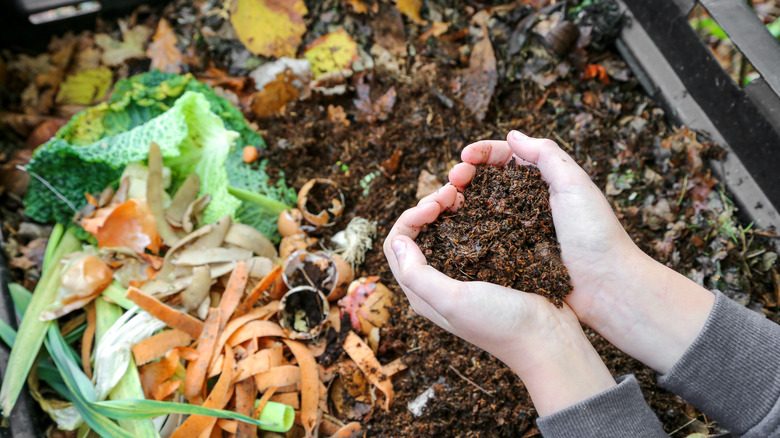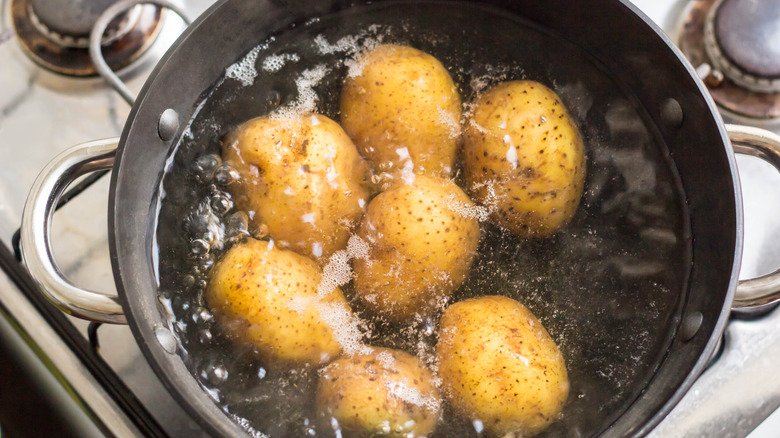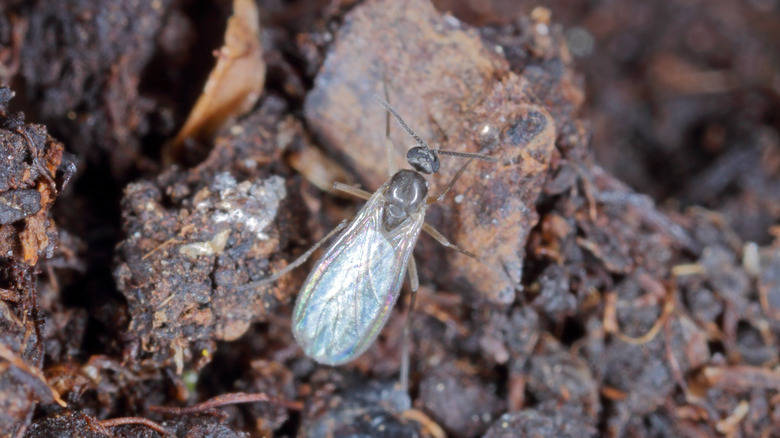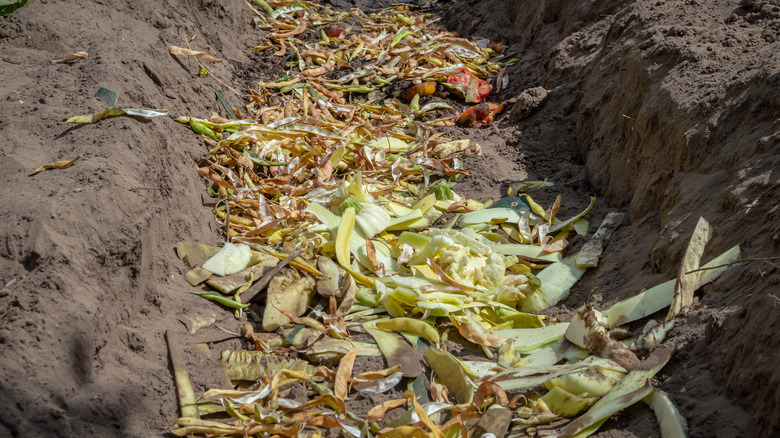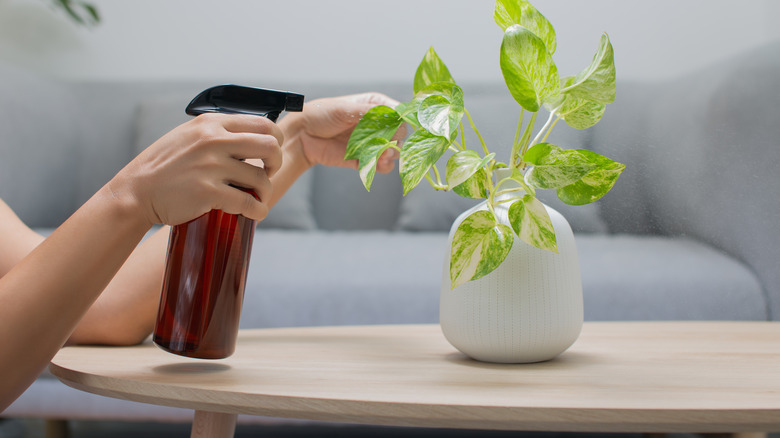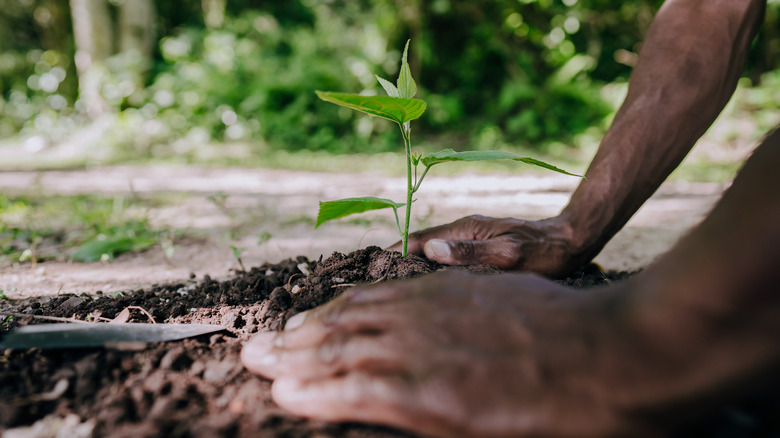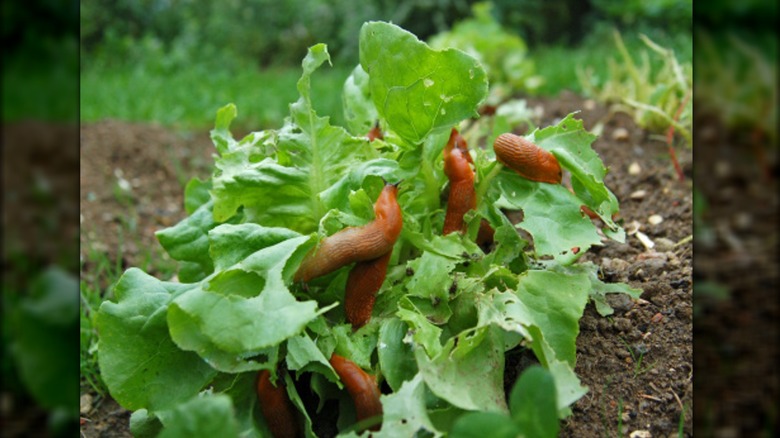Smart Ways To Repurpose Potato Peels In The Garden, According To Our Master Gardener
Potatoes are certainly among the most versatile vegetables. As Samwise Gamgee states in the second Lord of the Rings movie, you can "boil 'em, mash 'em, stick 'em in a stew." We couldn't agree more, but what do we do with all the peels from those taters? As it turns out, this amazing veggie that offers a variety of yummy dishes from French fries to shepherd's pie, also has many uses outdoors. Fertilization, pest traps, and soil building are just a few ways potato peels can be repurposed in the garden.
While we often discard potato peels because they are not as tasty as the smooth interior, they are chock full of nutrients. They contain the three macronutrients necessary for plants to thrive: nitrogen, phosphorus, and potassium, as well as micronutrients. As organic matter, they break down easily and quickly to make those nutrients bioavailable to plants while improving the soil. We imagine Samwise the gardener might say, you can "boil 'em, compost 'em, stick 'em in the ground."
Add peels to your compost pile
This is the most obvious option, but we cannot avoid mentioning it — if you save your food scraps, potato peels make an excellent addition to your compost pile. Compost piles break down best with a combination of green materials, like food scraps, and brown materials, like dry leaves and some paper products. The ideal ratio for your compost is 1 part green material (which includes potato peels) to 3 parts brown. When you toss your peels into the compost pile, be sure to add plenty of dry materials to balance them out.
Cooking water
Don't toss that leftover water if you take Samwise Gamgee's advice and boil your potatoes for dinner. Instead, let it cool and use it to water your plants. Boiling these root vegetables releases some of the nutrients and starches from the peels, creating a free, quick-acting fertilizer. After you remove your cooked potatoes, strain any solids out using a cheesecloth or a fine kitchen strainer. Water your plants immediately, or store your potato water in the fridge until you are ready to water indoor or outdoor plants.
Gnat trap
Are fungus gnats in your houseplants driving you crazy? You can use potato peels as a gnat trap. These tiny pests are attracted to the organic materials in your plant's soil. Laying a few scraps of potato peels on the surface of the soil offers an appealing location for fungus gnats to lay their eggs. Toss and replace those peels every few days to help control fungus gnats. If you see a lot of adult insects on the peels, you can safely use diluted dish soap as a natural pesticide. Discard the peels before they start to decompose.
Trench composting
If you have limited outdoor space or just don't want to deal with compost bins, you can compost your potato peels and other food scraps directly in your garden. Trench composting is a time-saving alternative to having a traditional compost bin. All you need to do is dig a trench in your garden between plants, about 6 inches deep. As you accumulate kitchen scraps, place them in the trench and cover them with soil. That material will break down quickly with the help of microbes in the soil. Keep digging and covering trenches to constantly feed your plants.
Homemade fertilizer
You can use the leftover water from whole potatoes, but you can also make fertilizer from the scraps of your peeled veggies. Before you toss the peels in your compost bin, extract as many nutrients and make them more available to plants by boiling them for about 15 minutes. Just like with your leftover potato water, let it cool and strain out the solids. Pour the fertilizer in a spray bottle to use as a foliar fertilizer spray, or keep it in the fridge to use when you water your plants.
Seed starting
If you are baking potatoes with thick skins, like russets, and only use the soft insides for your meal, save the skins. Cut your cooked potatoes in half, and scrape out the tasty interior. Then, use the solid halves as seed-starting containers. Fill the potato skin cup with seed starting mix, plant your seeds, and place them in a waterproof container. Water well, and when your seeds are ready to transplant, plant the entire thing, potato skin and all. This will provide quick food for your seedling while offering the ability to transplant without disrupting the roots.
Slug bait
Like fungus gnats, slugs are attracted to organic matter, including potato peels. Place your peels in areas where slugs tend to accumulate, like in cool, damp areas. These pests do a lot of damage to young seedlings, lettuce, and hostas, along with many other plants. Put your peels on the ground and check them each morning. When they are covered with slugs, dispose of them in the trash and start over with a new batch of peels. You can combine peels with beer traps to ensure you attract as many slugs as possible to keep them off your plants.

